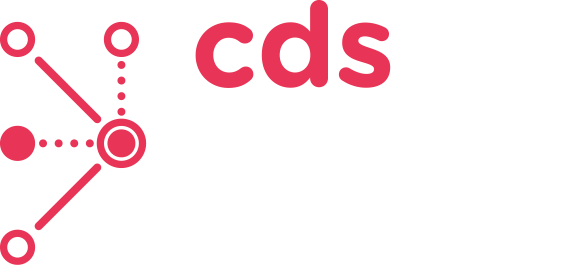Is Technology Enhanced Learning the answer to our L&D challenges?
Posted in Training & Learning Development
April 2021
5 minutes reading time
Take a little time out of your working day and let your mind wander back to your childhood. Who remembers their favourite children’s TV character? For me, it was a middle-aged, tiger skin wearing caveman who had a wife called Wilma, drove his car with his feet and had a pink dinosaur for a pet.
The truth is, whether it’s a big yellow bird, four crime fighting turtles, a coyote with 1000 lives, or even a pant wearing sponge who lived in a pineapple under the sea, no matter how old you are or where you come from you will, most of the time, be able to recall this memory. This image, that now sits at the forefront of your mind, clear as day is soon joined by character catchphrases, fellow cast members and if you think about it for long enough, the odd storyline or two may also appear.
Now your next challenge is to cast your mind back to the last training course you attended. How well do you remember the content of that course? What memories did you make? What did you learn? Don’t worry if you are having trouble answering these questions, for the vast majority of us, these memories are much more difficult to locate.
Wouldn’t it be fantastic if we had the capability to create training so memorable it could be recalled in years to come?
Creating memorable training however, isn’t the only challenge that L and D professionals are currently facing. As organisations all over the world prepare to embark on a journey into ‘the new normal’ it is more important than ever before that training is agile, effective and designed with the needs of our learners and their organisations in mind.
So what expectations do our learners and organisations hold for 2021 and beyond?
Firstly, with Fred Flintstone still firmly at the forefront of my mind, let’s look at this from a different angle. When I talk to my children about having to share a TV with the rest of my family growing up, they are truly horrified. They cannot believe for one second that we had 1 TV, with a choice of only 4 channels and only 1 hour a day of children’s programs (if we were lucky) or even that the remote control was actually attached to the TV by a wire. Today’s children expect a variety of shows on-demand that can be accessed anywhere on multiple devices. They want interactive video games and even the ability to create their own videos and shows. This has been made accessible to them through many technological advances including Satellite and Cable TV, streaming services and the internet.
In today’s digital world our learner’s expectations are not too dissimilar from the expectations of our children. Gone are the days where paper, pens, whiteboards, Post-its and PowerPoints alone satisfy learner needs. Our learners expect convenience, for training material to be made easily accessible to them in centralised locations, enabling them to train when and where it suits them. Our learners expect efficient learning, user-friendly programs, straight to the point content and the removal of unnecessary training material and time-wasting administration tasks. Learners want to be inspired, and incentivised, they want to be engaged, motivated and challenged. Many are competitive and results focused, and they want to be rewarded and acknowledged for their achievements. Learners want the opportunity to progress, to earn internal and external qualifications, they want training that is customised and unique to them, to have the opportunity to create their own learning journey and receive training that accommodates their unique pace and learning style.
And if that’s not enough, employers also come with their own list of demands. They expect training to be aligned to organisational objectives, they want modular training that can be accessed on demand without impacting operational performance. They want to be able to track and analyse learner performance without spending time rooting through hundreds of spreadsheets. They are asking for value for money and demonstrated return on investment. They want consistency and compliance and the assurance that their learning content is up to date. Lastly, they require training that serves its purpose, makes an impact and improvements employee performance, effectiveness, engagement and retention.
If we only had a learning method that could satisfy all these expectations?
The good news is, we already do. Technology Enhanced Learning (TEL) is the acquisition of knowledge through electric technologies and media, a learning solution that not only provides organisations with a flexible, cost effective, sustainable approach to learning but also comes with the following benefits enabling L and D professionals to meet learner and organisational requirements:
Engaging and memorable: TEL can incorporate memorable characters and visual stimulation into training with techniques such as 2D and 3D animation and models, 360-degree video, talking heads and simulations. This is all proven to increase learner engagement, training impact, speed to competency and sustainability.
Convenience and Mobility: TEL courses can work on multiple devices, allowing learners more flexibility and increasing training participation.
Centralisation of information – Learning Management Systems not only hold e-learning modules but can also provide links to a wealth of additional internal and external information including further reading, digital handbooks, e-books, portals, blogs, seminars, workshops and videos, offering learners additional tools and support.
Modular: TEL can create bite sized learning modules in order to separate skills and competencies allowing training to be specifically aligned to individual needs and knowledge gaps, to maximise efficiency and learner engagement. Learning Needs Analysis (LNA) can be completed prior to training and modules allocated as required. Eliminating time wasted teaching all learners content they already know.
Blended learning approach: TEL can incorporate all classroom-based approaches, group exercises, presentations, tests of learning, but in addition, can support digital learning not available in classroom environments including, simulations, 3D experiences, gamification and VR.
Personalisation: TEL enables learners to map to their own learning journey and track their progress while incorporating personal objectives and career aspirations.
Adapts for individual learning styles: Learners can work at their own speed. The blended learning approach allows for a range of learning styles including visual, aural, logical etc. Learners can also replay the TEL programs for a recap at any time without it disrupting other learners in the group.
Performance Tracking: TEL allows the learners to take responsibility for their own progression and track their performance as well as setting personal goals and highlighting challenges.
Scalability: Ability to add or improve existing training when required, reducing cost by not having to start from scratch. The ability to update when required and stay current and in line with the organisation’s strategic direction. This is especially important when delivering compliance and technical training which is continuously evolving.
Compliance and Security: E-learning programs are password protected, eliminating the requirement to move around paper training material to different training locations.
Cost and Environmental Impact: TEL reduces the need for facilitator resource and reduces travel costs and time to travel as learners no longer need to all be in the same location to attend training. It can also eliminate building hire and stationery costs.
Data collection: TEL allows us to analyse the impact of the training by collecting a range of data including percentage of modules completed, speed of answer, speed of progression through modules. This data can be used to calculate ROI, improve training further and support learners after their training has finished, by identifying any additional support they may require. TEL also eliminates human error when marking and recording performance results.
Consistency: TEL guarantees a consistent approach, ensures all learners are given exactly the same information, removes unconditional bias, negative training environments and facilitator inadequacies.
Ongoing Learning: It gives learners the ability to revisit training content at any point in their career as a refresher; training is no longer a one-time opportunity.
Organisational impact: TEL modules can be completed individually or in groups minimising unproductive hours. They also allow learners to continue with their training when working off site or from home.
After looking at the advantages of embracing digitalisation and providing Technology Enhanced Learning opportunities, it is clear to see that this learning method will ensure employees receive impactful, cost effective training for upskilling and reskilling their workforce while meeting learner and organisational demands.
Knowing what you know now let us revisit and think about the question I asked earlier…
Wouldn’t it be fantastic if we had the capability to create training so memorable it could be recalled in years to come?



-1.png?width=352&name=CDS%20DS%20BAU%20posts%20(1)-1.png)
